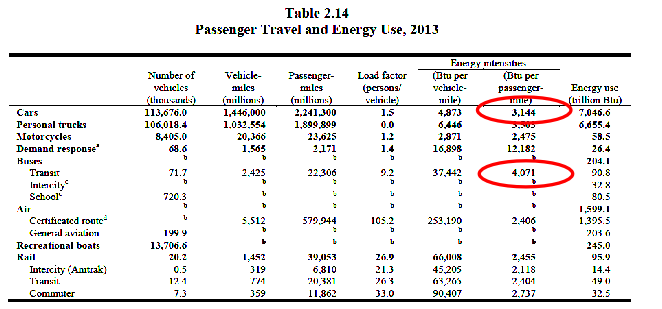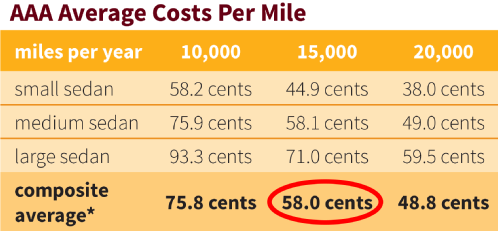
Portland is a PR machine for light rail & streetcar
Here are Some Facts About Portland Oregon
“It must always be remembered how cost-effectiveness works in the public sector: the cost IS the benefit.” - author unknown
Cars Save Commute Time
Based on data from the American Community Survey, commute to work on transit takes about twice as long as driving a car. The average car commute was found to be 25.2 minutes while the average transit commute was 48.1 minutes. Interestingly commute to work time was about the same for drivers whether they lived in suburbs or cities. Data from: http://www.debunkingportland.com/commutetime.html
Cars Are More Convenient
Your car is usually a few steps away in your garage (or within a short walk of your front door) compared to several blocks away for transit, or ¼ mile for light rail.
You car takes you when you want to go instead of being a slave to a bus schedule. There is no waiting for the bus in 100 degree heat or 0 degree cold. There is no exposure to criminals on the way to, or at, the bus stop.
You can make many stops on your way, unlike transit which involves a long wait for a bus after each stop.
When shopping, you can load up a weeks (or month’s) worth of groceries in your car, or carry a day or two’s worth of groceries on, the sometimes crowded bus.
And you NEVER have to stand up, jammed cheek to cheek with strangers, in your car
For older people driving is much easier than using transit - there is little walking involved and little exposure to crime or the elements. See: http://www.debunkingportland.com/elderly%20travel.html
A Pew research poll found cars are rated as the most needed item. See: http://www.debunkingportland.com/carsnecesary.html
Compared to buses,
- Cars use less energy,
- Cars emit less CO2,
- Cars are faster,
- Cars are cheaper,
- Cars are more convenient,
- Cars are easier to use than transit which is especially important for older people and handicapped people.
- Pew research found that people rate cars the most needed item.
Cars Are Cheaper Than Transit
AAA says that the cost of driving is 59.2 cents per mile. Allowing for the fact that the average car has 1.6 passengers, the average cost per passenger-mile is 37 cents. This is a highball number based upscale AAA member’s car costs, not the USA average. The cost for an average car is around 27 cents. (1) Data from AAA: http://exchange.aaa.com/wp-content/uploads/2015/04/Your-Driving-Costs-2015.pdf (see reverse side for excerpt)
TriMet reports that it carried 503,665,413 fixed route passenger-miles at a cost of $356,366,424 This is 71 cents per passenger-mile (82 cents for bus; 53 for light rail), about double the actual cost of driving an upscale car and does not include the high construction expense of light rail which would add another 33 cents (local cost only), making light
rail=86 cents. (http://trimet.org/about/pdf/trimetridership.pdf)
C-Tran reports that it carried 36,193,395 fixed route passenger miles for a cost of $34,483,217. This is 95 cents per passenger-mile, about three times the actual cost of driving.(2) Data from page 68 of C-TRAN Comprehensive Annual Financial Reports (CAFR) http://www.c-tran.com/images/CAFR/c-tran_2014_cafr.pdf (see reverse side for excerpt)
Cars Use Less Energy
The Transportation Energy Data Book shows cars use 3,144 BTU per- passenger-mile and “Transit Buses” use 4,071, 29% more. Data from http://cta.ornl.gov/data/tedb34/Edition34_Chapter02.pdf
Table 2.14. See reverse side for excerpt (Also see table 2.15)
Cars Emit Less CO2 Than Buses
The US Government says CO2 emissions are related to BTUs at 157.2 lbs CO2 per million BTU for Gasoline and 161.3 for Diesel.
https://www.eia.gov/tools/faqs/faq.cfm?id=73&t=11
—------------------------------------------------------
1 The AAA shows Operating cost per mile at 17 cents for a Medium Sedan. The ownership costs work out to be 41 cents for 15,000 annual miles. About 25 cents of that is depreciation of the new car. Assuming depreciation on the average USA car is only 5 cents, and an added 5 cents for maintenance, the cost of driving would be (59-15)/1.6 or 27 cents per passenger-mile.
2 People may wonder how a bus full of people can use more fuel per passenger than a car. The answer is that the average C-tran bus carries 7.8 people. See over.
Cars Beat Transit for Energy, CO2, Cost, Time & Convenience
Cost Data
Energy Data
Table 2.14 from http://cta.ornl.gov/data/tedb34/Edition34_Chapter02.pdf

Selected from: page 68 of http://www.c-tran.com/images/CAFR/c-tran_2014_cafr.pdf
Passengers per bus: 36,193,395 passneger-miles/ 4,636,289 vehicle miles = 7.8 passengers/vehicle


| Bribery |
| Cheaper & Better Transit |
| EuroTranistShareLoss |
| Elderly Travel |
| GM & The Streetcar |
| Commute Time Chart |
| Top 10 Bus |
| Clackamas Public Safety |
| transit_congestion |
| McLoughlin Plan |
| CRC_Planning |
| Zoneing Increases Cost, Hurts Economy |
| High Rise |